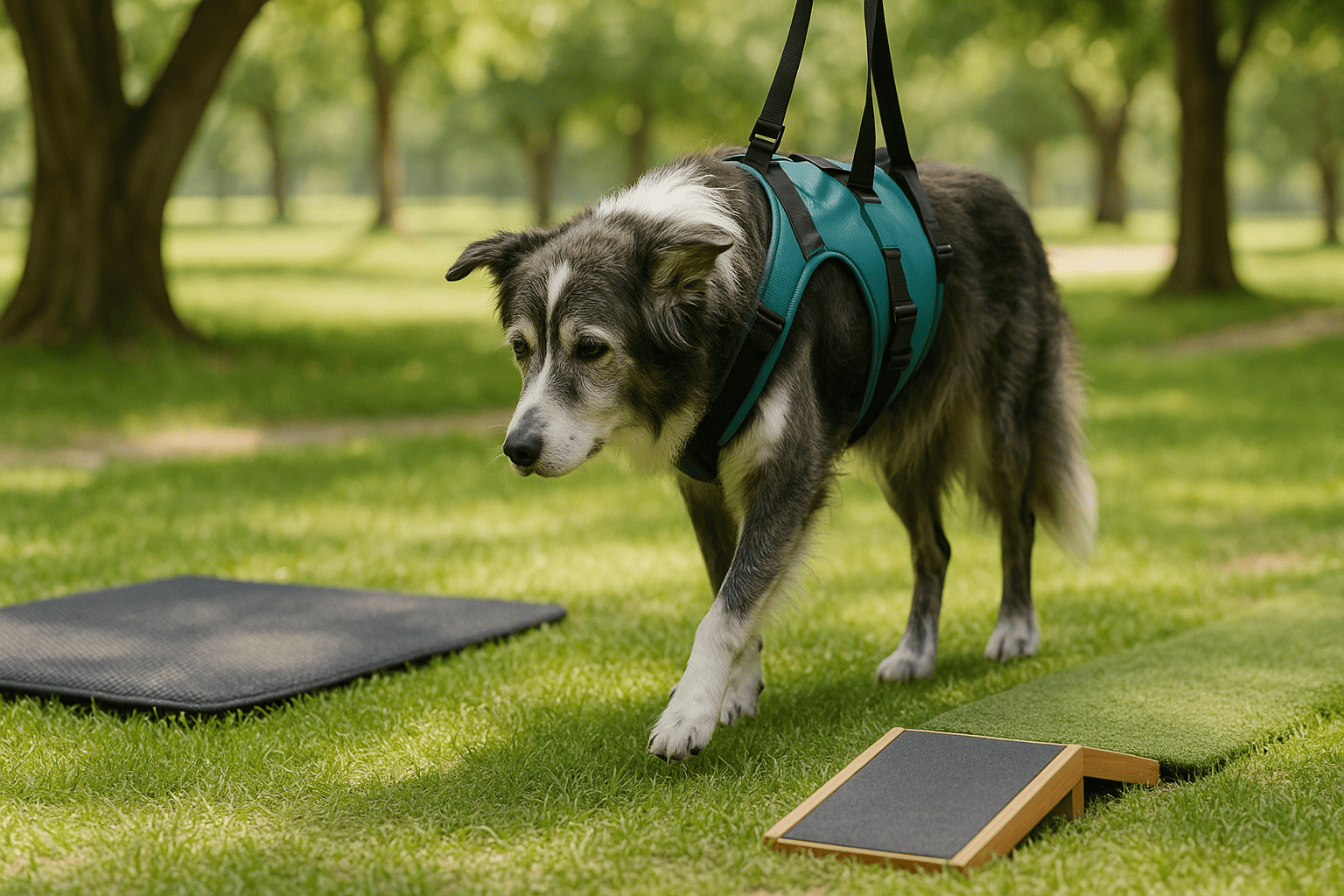Arthritis is a common condition in senior dogs and can significantly affect their mobility and willingness to engage in physical activity. Characterized by joint inflammation, arthritis causes pain, stiffness, and limited range of motion in our four-legged friends. For pet parents, it can be challenging to keep their dog active while also protecting their joints.
Keeping an arthritic dog moving is essential for maintaining physical and mental health, preventing muscle loss, promoting circulation, and supporting emotional well-being. However, exercise routines must be adapted carefully to avoid discomfort and prevent injuries, ensuring that physical activity becomes a source of relief rather than pain.
The goal of this article is to offer practical and safe tips for exercising dogs with arthritis—helping you avoid injuries while improving your dog’s quality of life.
Know Your Dog’s Limits
To safely exercise a dog with arthritis, the first step is understanding their limits. Dogs with arthritis may show signs of discomfort during or after physical activity, and it’s up to the caregiver to recognize those signs and adjust exercises as needed. Common indicators of pain include limping, joint stiffness, reluctance to move, behavioral changes, whining, or visible signs of distress.
Paying close attention to these reactions is key. For instance, if your dog starts to limp or seems hesitant to continue, it’s a clear sign that they need a break. Respecting these cues helps prevent more harm than good during exercise.
Avoid high-impact activities such as long runs or jumping. Instead, opt for gentle movements like short, frequent walks on soft surfaces that are easier on the joints. The goal is to keep your dog moving in a controlled, gradual way that prioritizes comfort and safety.
Choose the Right Surfaces
The type of surface your dog exercises on plays a major role in preventing injuries. Soft, non-slip surfaces such as grass, carpet, or rubber mats are ideal for arthritic dogs, as they reduce joint impact and provide a safer base for movement.
Hard, slippery floors like tile and laminate are hazardous for dogs with arthritis. These surfaces increase the risk of slipping, falling, and further joint damage. Stairs should also be avoided, as climbing puts unnecessary strain on inflamed joints.
If outdoor space is limited, you can adapt indoor environments by placing non-slip rugs or mats in areas where your dog moves around. Investing in ramps instead of stairs can also ease daily routines. By creating a safe, joint-friendly environment, your dog can move with more confidence and less risk.
Supportive Equipment
Supportive gear can make a big difference in your dog’s comfort and safety during exercise. These tools reduce physical strain and prevent sudden movements that could worsen joint pain.
Ramps are a great option for helping your dog access elevated areas like couches or cars. They eliminate the need for jumping, which reduces joint stress. Both fixed and portable ramps can be installed throughout the home.
Harnesses and proper collars are also important, especially for dogs with limited mobility. Chest or back-support harnesses distribute weight evenly and make walks easier to manage, reducing strain on the legs and improving stability.
Non-slip mats and runners can be used in high-traffic areas to prevent slips and falls, especially on slick floors like hardwood or tile. These surfaces offer cushioned support, perfect for light stretching and low-impact play. Placing these mats along hallways and entrances creates safer zones for movement and encourages confidence in arthritic dogs.
Together, these simple adjustments and tools can greatly improve the everyday life of a dog with arthritis, helping them stay active without unnecessary pain.
Low-Impact Exercises
Low-impact exercises are ideal for dogs with arthritis, allowing them to stay active while minimizing joint stress. The key is to choose activities that improve mobility and muscle strength without overexertion.
Short and frequent walks are highly effective. Instead of one long walk, break exercise into multiple short sessions throughout the day. This reduces joint pressure and keeps your dog moving without fatigue. Always choose flat, soft surfaces like grassy parks or lawns.
Gentle stretching also benefits arthritic dogs by increasing flexibility and easing stiffness. Light stretches, such as extending the front legs and massaging tense areas, can be done with caregiver assistance. Ideally, these should be guided by a veterinarian or pet physiotherapist to ensure safety.
Supervised swimming is one of the best low-impact exercises for dogs with arthritis. Water supports the body and alleviates pressure on joints while offering natural resistance that helps strengthen muscles. Make sure the water temperature is comfortable and that the activity is always supervised.
These low-impact activities improve circulation, reduce pain, and support mental wellness, all of which contribute to a better quality of life for senior dogs.
Include Rest Breaks
Incorporating frequent rest breaks is essential when exercising dogs with arthritis. Because their stamina is reduced, allowing time to recover during activities helps avoid overloading the joints and reduces the risk of pain or injury.
Ideally, pause every 10 to 15 minutes during activities like walking or light play to allow your dog to catch their breath and rest. These pauses are especially helpful on harder surfaces or during more stimulating play.
For more intense exercises, such as swimming, allow a recovery period of 24 to 48 hours between sessions. This gives your dog’s muscles and joints time to recover and prevents excessive strain while still promoting strength-building.
Veterinary Supervision and Physical Therapy
Ongoing veterinary care is crucial to ensure that your arthritic dog receives the proper support for physical activity. A veterinarian can evaluate joint health, identify movement limitations, and recommend personalized adjustments to your dog’s exercise plan. They may also suggest supplements or medications to ease arthritis symptoms.
Veterinary physical therapy is another excellent option. It helps reduce joint pain and stiffness while improving strength. Low-impact therapies like hydrotherapy can provide pain relief and increase activity levels under safe, controlled conditions.
Collaborating with a veterinary physiotherapist allows you to create a tailored exercise plan that includes home activities, gentle stretches, and safe daily routines. This ensures your dog exercises within their limits while maintaining mobility and overall wellness.
Conclusion
Keeping your arthritic dog active can be a challenge, but it’s crucial for maintaining a healthy and fulfilling life. By following tips such as recognizing your dog’s limits, choosing safe surfaces, using supportive equipment, opting for low-impact exercises, incorporating regular breaks, and working closely with a veterinary team, you can create a fitness routine that protects your dog’s joints and supports their well-being.
Always observe your dog’s reactions and adjust activities as needed. Every dog is different, and their needs may change over time—especially with a condition like arthritis. A flexible, attentive approach will help your dog stay mobile, happy, and pain-free.
Above all, remember that your dog’s comfort comes first. By applying these practices and maintaining consistent care, you’ll give your furry friend the best chance at a joyful, active life—despite arthritis.

